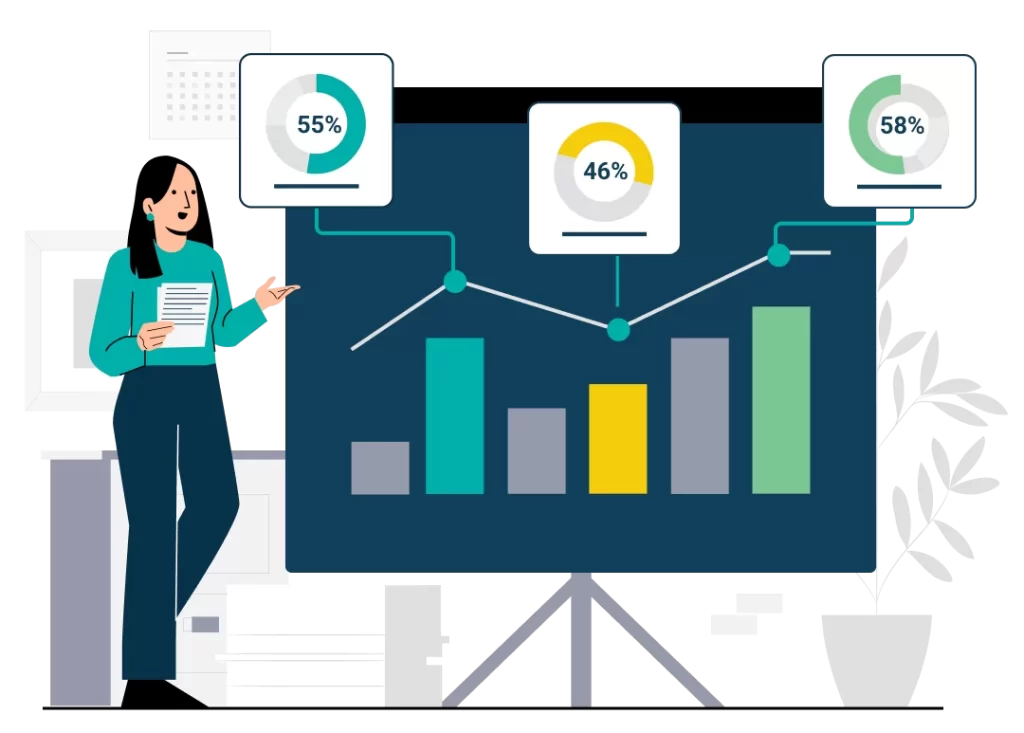Selecting the wrong technology outsourcing partner can derail projects, drain budgets, and damage team morale. Vendor evaluation requires a systematic framework that goes beyond cost comparison. This guide is part of our comprehensive Outsourcing Risk Management Playbook for Technology Leaders, providing a structured methodology for assessing potential technology partners across technical capabilities, financial stability, cultural fit, and operational excellence. You’ll learn how to create evaluation scorecards, conduct due diligence, and avoid common selection pitfalls that plague technology partnerships. Whether you’re outsourcing software development, infrastructure management, or specialised technical services, this framework ensures data-driven vendor selection that aligns with your company’s growth objectives and technical requirements.
What are the essential criteria for evaluating technology outsourcing vendors?
Vendor evaluation requires assessing five core dimensions: technical capabilities, financial stability, cultural alignment, communication effectiveness, and operational excellence. These criteria should be weighted based on project complexity, strategic importance, and risk tolerance.
Vendor assessment is a systematised process of evaluating a technology services provider based on specific business objectives, operating model, risk tolerance profile, and budgetary considerations. Technical capabilities encompass technology stack expertise, development methodologies, and quality assurance processes. The vendor must demonstrate proficiency in your required technologies and maintain development practices that align with your quality standards.
Financial stability indicators include revenue analysis, profit margins, cash flow evaluation, and client concentration risk. You need to verify that your potential partner has the financial foundation to support long-term projects and can adapt to your growing business needs. Client retention rates, financial statements, and credit ratings provide insight into whether the provider can support ongoing engagements without financial disruption. These financial assessments form a critical component of the broader outsourcing risk management framework that technology leaders need to implement.
Cultural and communication evaluation methods help ensure seamless collaboration between your teams and the vendor’s staff. This assessment includes reviewing communication styles, work practice compatibility, value alignment, and team interaction approaches.
Operational excellence factors encompass project management capabilities, delivery track record, and scalability potential. You should examine their established processes for quality control, timeline management, and resource allocation.
How do you assess a vendor’s technical capabilities and expertise?
Technical assessment involves portfolio review, technology stack analysis, development methodology evaluation, and proof-of-concept projects. Review code quality, architecture decisions, and testing practices through sample projects or technical interviews to verify expertise in relevant technologies.
Start by identifying the three most important technical skills and focus on technical expertise with the greatest impact on user experience. Avoid generalists claiming expertise in all tech fields, as this often indicates surface-level knowledge rather than deep competency. Request detailed case studies that demonstrate how they’ve solved problems similar to yours using the specific technologies in your stack.
Code quality assessment requires examining actual work samples rather than relying solely on portfolio presentations. Ask for anonymised code samples from recent projects, focusing on architecture decisions, commenting practices, and testing coverage. Look for evidence of clean code principles, proper error handling, and maintainable design patterns.
Technology stack compatibility evaluation ensures the vendor can work effectively with your existing systems and preferred tools. This includes programming languages and frameworks, development tools, deployment processes, and monitoring solutions. The vendor should demonstrate familiarity with your technology ecosystem, including any legacy systems they’ll need to integrate with.
Development methodology alignment becomes important for long-term partnerships. The vendor needs to demonstrate how they’ll integrate with your existing processes while maintaining their quality standards and delivery timelines.
What should you look for in vendor financial health assessments?
Financial stability assessment includes revenue analysis, profit margins, cash flow evaluation, and client concentration risk. Request financial statements, credit reports, and business sustainability indicators to evaluate growth trajectory, funding sources, and dependency on major clients for long-term partnership viability.
Revenue stability patterns over the past three to five years reveal whether the vendor operates sustainably or experiences significant volatility that could affect service delivery.
Client concentration risk assessment examines how dependent the vendor is on major clients for their revenue. A vendor that derives more than 20-30% of their revenue from a single client faces significant business risk if that relationship ends. This dependency could force them to prioritise that major client’s needs over yours.
Cash flow and working capital analysis provides insight into the vendor’s ability to maintain operations during challenging periods. Positive cash flow trends and adequate working capital reserves indicate the vendor can continue providing services even if they experience temporary setbacks.
Payment terms and financial guarantee considerations help protect your interests while ensuring the vendor maintains healthy cash flow. Reasonable payment terms demonstrate mutual respect, while overly aggressive payment demands might indicate cash flow problems.
How do you evaluate cultural fit with potential outsourcing partners?
Cultural fit assessment involves communication style evaluation, work practice compatibility, value alignment, and team interaction analysis. Conduct video interviews with potential team members, assess time zone management approaches, and evaluate conflict resolution methodologies through trial interactions.
Communication practices and language proficiency significantly impact project success, particularly for nearshore and offshore partnerships. Assess whether the vendor’s communication style matches your organisational culture. Some teams prefer frequent check-ins and detailed progress reports, while others work better with milestone-based updates.
Work ethics and cultural alignment influence daily collaboration effectiveness. The vendor’s approach to deadlines, quality standards, and problem-solving should complement your team’s working style.
Time zone management capabilities become especially important for distributed teams. Working in the same time zone allows for more frequent meetings, making nearshoring easier to manage compared to offshore partners.
Trial interactions through small pilot projects provide the most reliable assessment of cultural compatibility. These limited engagements reveal how the vendor handles real-world challenges and adapts to your feedback.
What are the key differences between small, medium, and large outsourcing vendors?
Small vendors offer specialised expertise and flexibility but carry higher business continuity risks due to personnel dependencies and limited resources. Medium vendors provide balanced service levels with moderate risk profiles, while large vendors deliver enterprise-grade processes and stability but may lack flexibility and personal attention.
Small vendors with under 100 specialists may provide more personalised attention and flexibility but might be unable to handle larger projects. Their smaller size often translates to more direct access to senior developers and decision-makers, creating faster response times. However, they face greater vulnerability to key personnel changes and may lack the resources to scale quickly.
Medium vendors with 100-500 specialists typically offer the best balance of personal attention and resource availability. They usually have more resources and a larger pool of candidates, benefiting projects requiring larger teams or specialised skills. These organisations combine the agility of smaller firms with more established processes and financial stability.
Large vendors with 500+ specialists provide enterprise-grade processes, extensive resources, and proven scalability. They offer mature quality control systems and significant financial stability. However, they might be slower to adapt to changing requirements and more selective about prioritising accounts. Your project might receive less attention if it represents a small percentage of their overall business.
The “golden rule of 5%” suggests ensuring your outsourcing engagement represents at least 5% but no more than 20% of the vendor’s business base. This range helps guarantee adequate attention while avoiding overdependence. Projects below 5% might not receive priority attention during busy periods, while those above 20% create concentration risk for the vendor. This principle aligns with broader multi-vendor strategy approaches that help distribute risk across your technology partnerships.
How do you create an effective vendor evaluation scorecard?
Creating an effective scorecard requires establishing weighted criteria across technical, financial, cultural, and operational dimensions. The scorecard process begins with defining what matters most for your specific project and business context.
Create a scoring system with criteria and assign values to each dimension, comparing results to build a shortlist of top candidates for final selection. Use 1-10 scoring scales with specific evaluation criteria for each dimension to ensure consistency across different evaluators and vendor assessments. The scoring rubric should define what constitutes excellent, good, acceptable, and poor performance in each category.
Technical capability scoring criteria should include portfolio quality, relevant experience, technology stack alignment, and development methodology compatibility. Assign specific point values for demonstrated expertise in your required technologies, successful completion of similar projects, and quality of code samples.
Financial stability scoring methodology examines revenue trends, profit margins, client concentration, and growth patterns. Higher scores go to vendors with consistent revenue growth, diversified client bases, healthy profit margins, and strong cash flow positions. Deduct points for excessive client concentration or declining revenue trends.
Cultural fit and communication scoring frameworks assess language proficiency, communication style alignment, time zone compatibility, and work ethic matching. Score vendors based on their ability to integrate with your team culture and maintain effective communication channels.
The scorecard implementation process should involve multiple evaluators to reduce individual bias and ensure comprehensive assessment. Document the rationale behind scoring decisions and maintain detailed notes about vendor strengths and weaknesses.
What questions should you ask about vendor exit policies and contracts?
Understanding how partnerships end before they begin protects your business interests and ensures smooth transitions when needed. Contract evaluation must address data ownership, intellectual property rights, knowledge transfer procedures, and termination clauses. For detailed guidance on structuring these protective measures, see our comprehensive guide on outsourcing contract protection strategies.
Termination clauses specify conditions and procedures for ending services, detailing notice periods and breach criteria to protect business continuity. These clauses should address scenarios such as breach of contract, insolvency, or strategic withdrawal. Reasonable notice periods allow for orderly transitions while protecting both your business continuity and the vendor’s operational planning.
Data ownership and intellectual property protection clauses require attention to ensure your business retains control over its assets. The contract should specify that all work products, custom code, and business data remain your property. It should also address how the vendor will handle your confidential information during and after the engagement, including secure deletion requirements.
Knowledge transfer and documentation requirements become particularly important for complex, long-term projects. The vendor should commit to maintaining documentation throughout the engagement and providing thorough knowledge transfer if the relationship ends. This includes technical documentation, process descriptions, and training for your internal team.
Post-termination data handling policies should specify exactly how the vendor will return or destroy your data within agreed timeframes. Any company-owned data in the vendor’s possession should be returned or permanently deleted in accordance with contractual obligations. The vendor should provide certification of data destruction and remove all access credentials.
Performance guarantee and penalty clauses help ensure accountability while providing recourse for service failures. These provisions should be reasonable and mutual, protecting both parties’ interests while encouraging high performance standards.
Which outsourcing engagement models work best for different project types?
Different project types and business contexts require different engagement approaches. Fixed-price models suit well-defined projects with stable requirements, while time-and-material models work for evolving projects requiring flexibility. Dedicated team models provide maximum control for long-term development, and hybrid models combine elements based on project phases, risk distribution, and budget constraints.
Fixed-price model is a project-based pricing approach that determines the project’s scope, work schedule, and cost before actual development begins. This model works best for projects with defined requirements, minimal expected changes, and specific deliverables. It provides budget certainty and shifts delivery risk to the vendor, making it attractive for organisations with fixed budgets or those requiring precise cost predictions.
Time and material billing charges clients based on the daily rate of each specialist involved in the project, with detailed project reports provided regularly. This model offers maximum flexibility for projects with evolving requirements, experimental features, or uncertain scope. It allows for rapid adaptation to changing business needs while providing transparency into resource utilisation.
Dedicated Team model provides clients with long-term partnerships where the vendor assembles and manages a team exclusively for your projects. Pricing typically involves monthly payments for team members, creating predictable costs while maintaining flexibility in work allocation. This model suits organisations requiring ongoing development support or multiple concurrent projects.
Staff augmentation is ideal for scaling internal teams with external talent while retaining full management control. This approach works well when you have strong internal project management capabilities but need additional technical resources. The vendor provides skilled developers who integrate directly into your existing teams.
Hybrid models combine different engagement approaches to optimise for specific project phases or requirements. For example, you might use fixed-price contracts for well-defined initial phases, then switch to time-and-material for ongoing maintenance. These flexible arrangements allow you to balance cost predictability with adaptability.
FAQ Section
How long should the vendor evaluation process take for technology outsourcing?
Plan 4-6 weeks for evaluation including initial screening (1 week), detailed assessment (2-3 weeks), reference checks (1 week), and final selection (1 week).
What percentage of project budget should be allocated to vendor evaluation?
Allocate 2-5% of total project budget to vendor evaluation activities, including assessment time, proof-of-concept projects, and due diligence costs.
Should I require vendors to complete paid proof-of-concept projects?
Yes, for projects over $50,000 or involving critical business functions. Pay fair compensation for proof-of-concept work to attract quality vendors and evaluate real capabilities.
How many vendor references should I contact during evaluation?
Contact minimum 3-5 references per vendor, including recent clients, long-term partnerships, and projects similar to your requirements.
What are the biggest red flags in vendor evaluation processes?
Red flags include reluctance to provide references, vague technical responses, unrealistic timeline promises, significantly below-market pricing, and poor communication during evaluation.
How do I evaluate vendor expertise in emerging technologies?
Assess vendor learning agility, training programs, certification pursuits, experimental projects, and partnerships with technology providers.
What should be included in vendor evaluation documentation?
Document evaluation criteria, scoring methodologies, vendor responses, reference check results, risk assessments, and decision rationale.
How do I handle vendor evaluation for multiple concurrent projects?
Develop evaluation frameworks, create vendor pools for different expertise areas, and establish preferred vendor relationships to streamline future selections.
Should vendor location affect the evaluation scoring process?
Yes, factor in time zone alignment, cultural compatibility, communication effectiveness, and geographic risk considerations based on project collaboration requirements.
How often should vendor performance be re-evaluated during partnerships?
Conduct formal performance reviews quarterly for strategic partnerships and annually for project-based relationships, with continuous monitoring of key performance indicators.
What role should the development team play in vendor evaluation?
Include senior developers in technical capability assessment, code review processes, and cultural fit evaluation to ensure team-level compatibility and technical alignment.
How do I evaluate vendor capacity for scaling during business growth?
Assess vendor hiring capabilities, resource allocation flexibility, infrastructure scalability, and experience managing client growth trajectories in similar company stages.
Conclusion
Effective vendor evaluation requires systematic assessment across technical, financial, cultural, and operational dimensions. The framework outlined here provides a structured approach to identifying technology partners who align with your business objectives while minimising selection risks.
Remember that vendor evaluation is an investment in long-term success, not just a procurement exercise. The time and resources spent on thorough assessment typically pay dividends through improved project outcomes and stronger partnerships.
Vendor evaluation represents just one component of a comprehensive approach to managing outsourcing risks. For the complete picture of protecting your technology investments, explore our complete outsourcing risk management guide that covers everything from vendor selection through ongoing relationship management.
Start implementing this framework for your next vendor selection process. Create evaluation scorecards tailored to your specific requirements, conduct due diligence, and don’t rush the decision. The right technology partner becomes an extension of your team.












